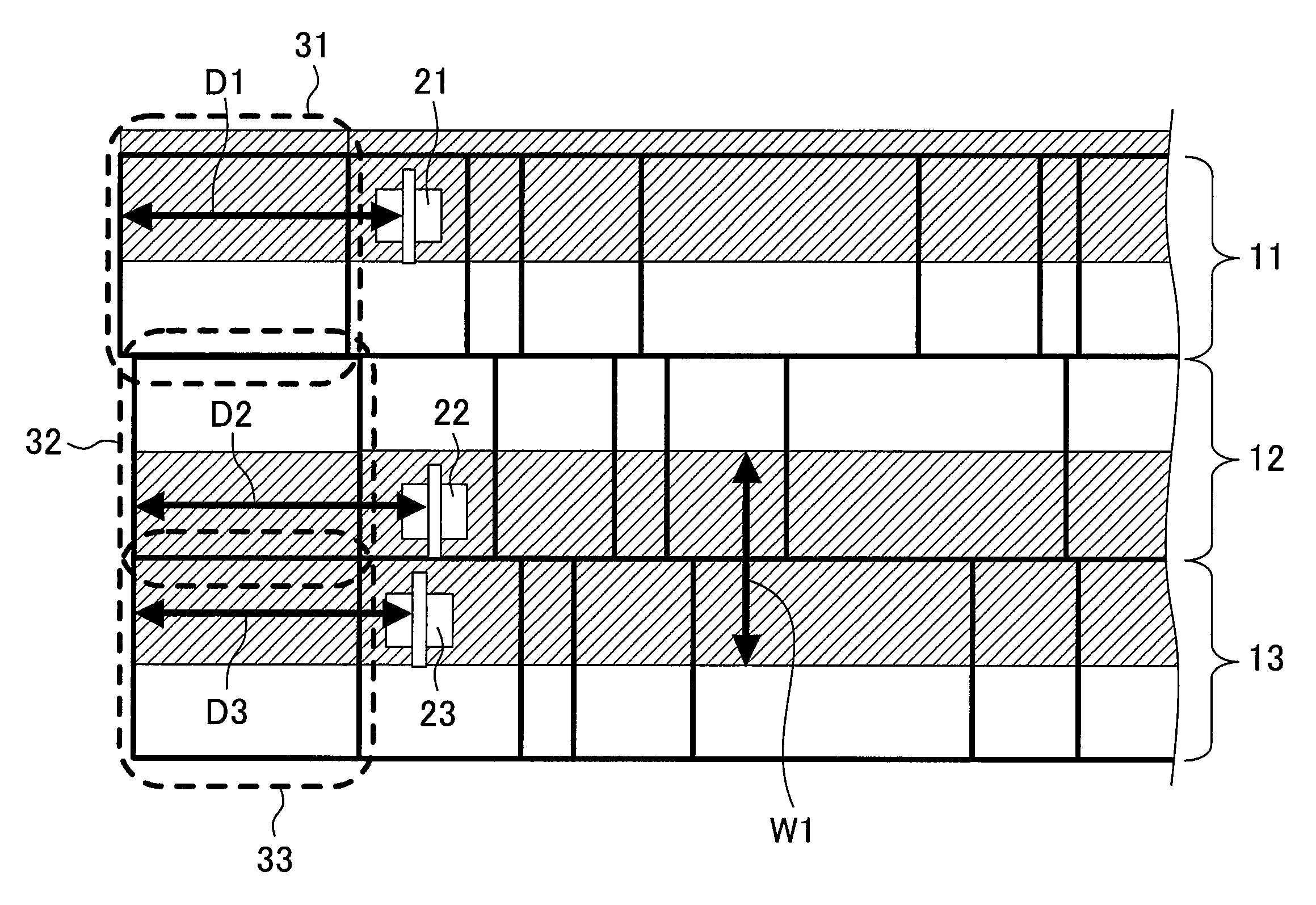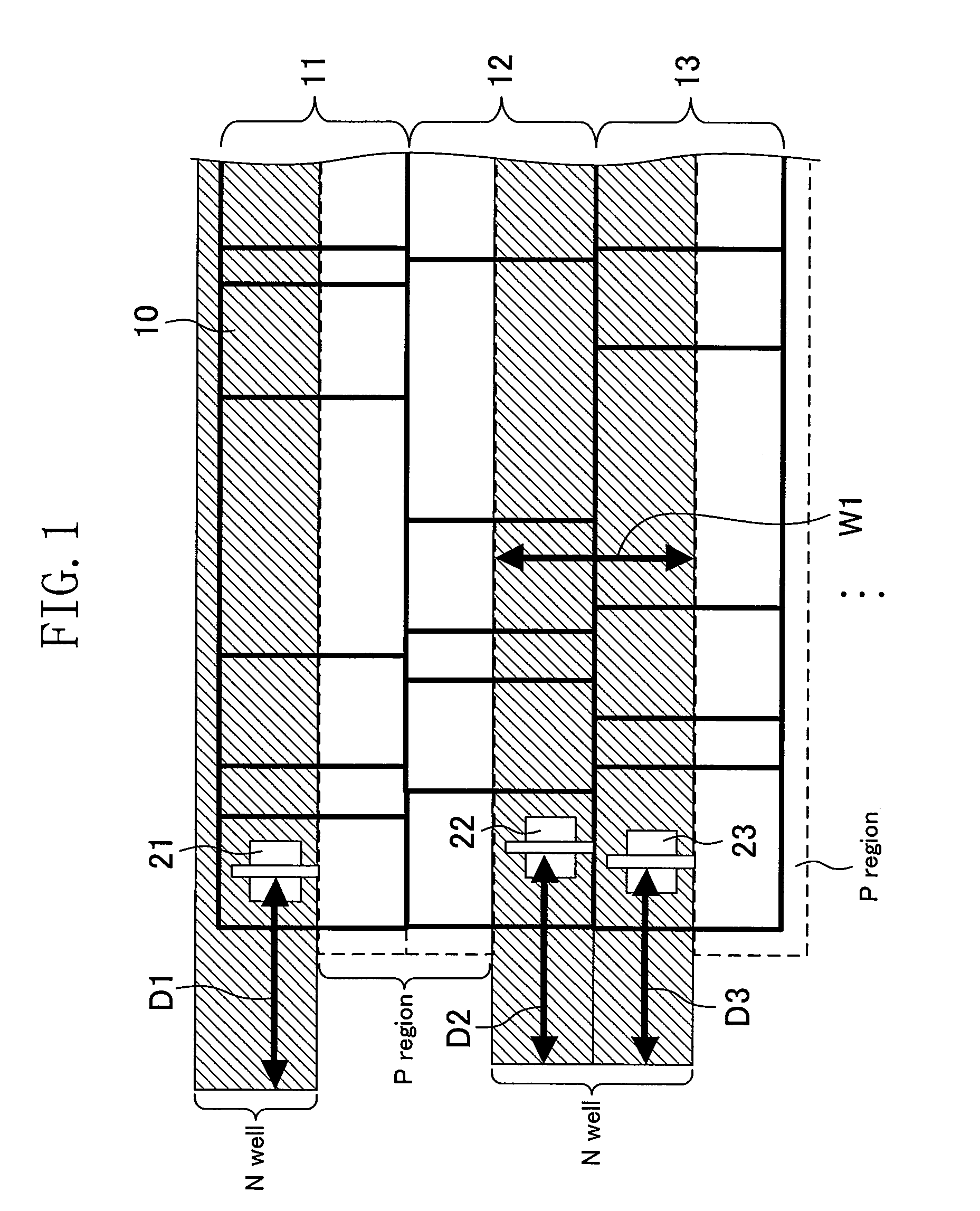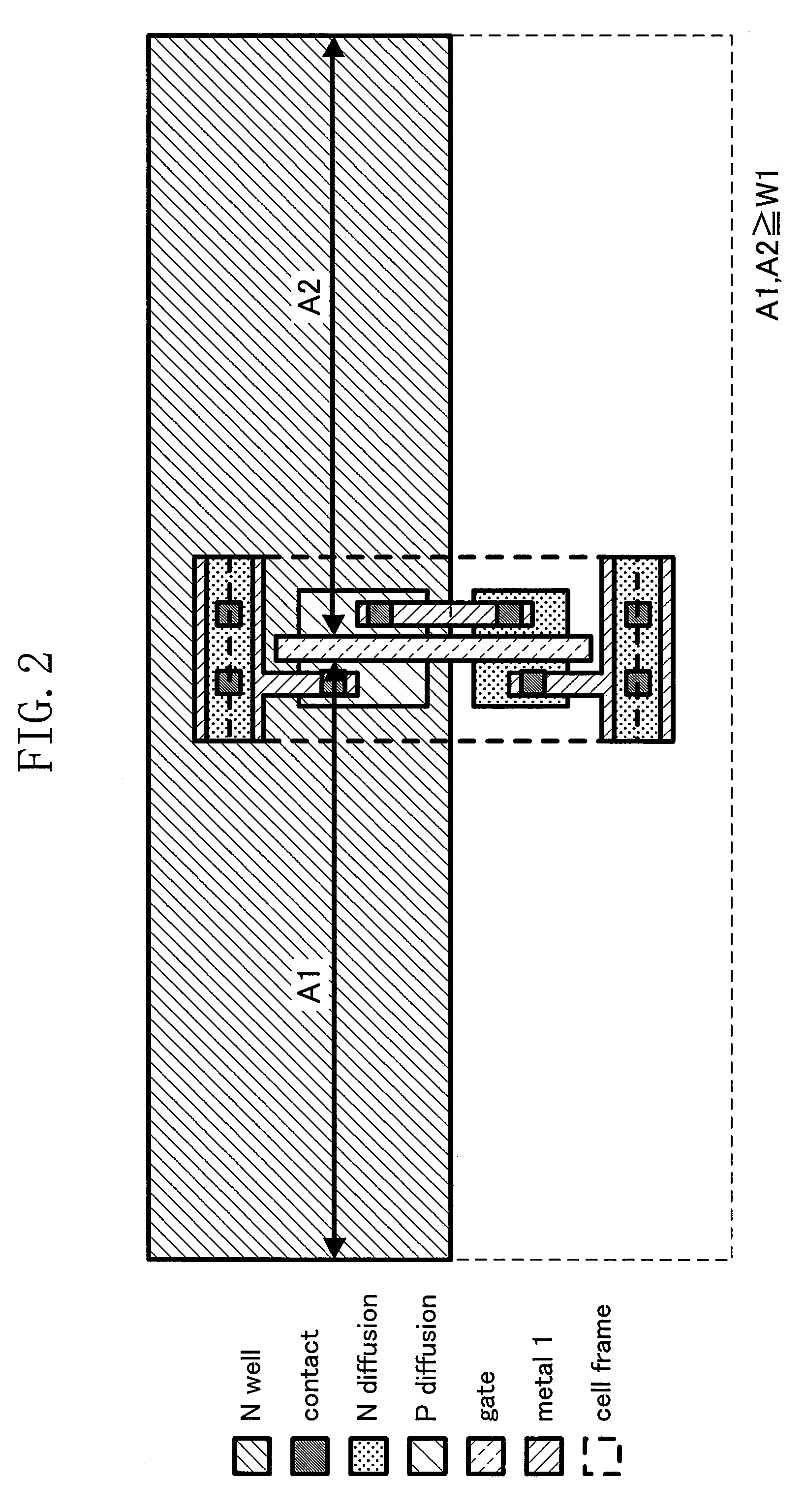Semiconductor integrated circuit device
a technology of integrated circuits and semiconductors, applied in semiconductor devices, instruments, computing, etc., can solve the problems of affecting the design of integrated circuits, affecting the performance of circuits, and reducing yield, so as to achieve suppressed variations in transistor characteristics due to the well proximity
- Summary
- Abstract
- Description
- Claims
- Application Information
AI Technical Summary
Benefits of technology
Problems solved by technology
Method used
Image
Examples
first embodiment
[0078]FIG. 1 is a diagram showing a portion of a layout of a semiconductor integrated circuit device according to a first embodiment of the present invention. In FIGS. 1, 11, 12 and 13 indicate standard cell rows in which standard cells 10 (illustrated with rectangles) are arranged in the horizontal direction. The standard cell rows 11, 12, 13, . . . are arranged in the vertical direction to form a circuit block. The standard cell row 11 is the uppermost row. Each of the standard cell rows 11, 12 and 13 includes an N well and a P region which extend in the horizontal direction and are adjacent to each other in the vertical direction. Each standard cell 10 has a PMOS transistor formed in the N well and an NMOS transistor formed in the P region. Note that transistors other than PMOS transistors 21, 22 and 23 are not shown.
[0079]The semiconductor integrated circuit device of FIG. 1 has an N-well structure in which PMOS transistors are formed on an N well and NMOS transistors are formed...
second embodiment
[0096]FIG. 9 is a diagram showing a portion of a layout of a semiconductor integrated circuit device according to a second embodiment of the present invention. The semiconductor integrated circuit device of FIG. 9 has substantially the same configuration as that of FIG. 1. The same parts are indicated by the same symbols. W2 indicates a width in the vertical direction of an N well in a first standard cell row 11.
[0097]In the semiconductor integrated circuit device of FIG. 9, the width W2 in the vertical direction of the N well in the first standard cell row 11 is broadened as compared to the conventional layout of FIG. 26. The width W2 is also greater than or equal to a width (shared-N well width) W1 in the vertical direction of an N well shared by second and third standard cell rows 12 and 13. Thereby, a distance D4 from a PMOS transistor (e.g., a PMOS transistor 21) to a farther end in the vertical direction of the N well in the first standard cell row 11 is greater than or equal ...
third embodiment
[0112]A third embodiment of the present invention is a combination of the first and second embodiments. FIG. 16 is a diagram showing a portion of a layout of a semiconductor integrated circuit device according to the third embodiment of the present invention. The semiconductor integrated circuit device of FIG. 16 has substantially the same configuration as that of FIGS. 1 and 9 and the same parts are indicated by the same symbols.
[0113]In the semiconductor integrated circuit device of FIG. 16, distances D1, D2 and D3 from PMOS transistors 21, 22 and 23 to ends of N wells are broadened to be greater than or equal to a width W1 in the vertical direction of an N well shared by second and third standard cell rows 12 and 13, as in the semiconductor integrated circuit device of FIG. 1. Also, a width W2 in the vertical direction of an N well in a first standard cell row 11 is broadened to be greater than or equal to the width W1 in the vertical direction of the N well shared by the second ...
PUM
 Login to View More
Login to View More Abstract
Description
Claims
Application Information
 Login to View More
Login to View More - R&D
- Intellectual Property
- Life Sciences
- Materials
- Tech Scout
- Unparalleled Data Quality
- Higher Quality Content
- 60% Fewer Hallucinations
Browse by: Latest US Patents, China's latest patents, Technical Efficacy Thesaurus, Application Domain, Technology Topic, Popular Technical Reports.
© 2025 PatSnap. All rights reserved.Legal|Privacy policy|Modern Slavery Act Transparency Statement|Sitemap|About US| Contact US: help@patsnap.com



